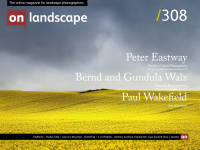Charles Twist chooses one of his favourite images

Charles Twist
The first serious steps on my photographic journey began 20 years ago, when I moved to sheet film and view cameras, primarily capturing full-colour landscapes. Since then, I have delved into the history and technology of my craft. Rediscovering and mastering the reversal processing of photographic paper was a pivotal moment for me, laying the foundation for a collaborative project focused on creating sepia portraits at events using vintage methods and equipment.
Subsequently, I designed and constructed my own view camera. Presently, I continue to employ the reversal process with a century-old camera to compile my personal photo-diary. Simultaneously, I use my homemade camera, fitted with a digital back, to craft colour photographs of landscapes and architecture. While I am proficient in both analog and digital technologies, my cameras all share a common feature – a bellows at their heart.
Through the texts and pictures of Le Corbusier, Mondrian, Malevich and many other artists from the early 20th century, I discovered the idea of equilibrium and saw how shapes of different colours and size could balance against each other. It is one thing to paint or sculpt to demonstrate such principles; it is quite another to photograph with the same aim. We photographers depend on what we find, but also what technical means are at our disposal – our own skills, focal length of lenses, perspective control and so on. I was nevertheless drawn to these ideas and sought to create pictures obviously dealing with them while still revealing something of my subject. I had been doing so for ten years when I discovered Jon Brock’s work through a forum dedicated to large format photography, over fifteen years ago now.
We were both shooting on 5x4 sheets of film, using a view camera – a method which not only enabled excellent technical results (not least by angling the plane of sharp focus), but also gave the tools to set up a more sophisticated narrative between the elements of the picture. Even by the standards of the field, his pictures exhibited a remarkable poise born in clarity of purpose.

